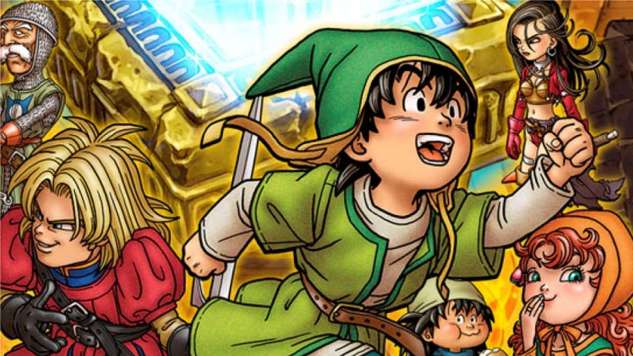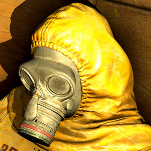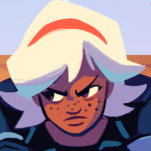Dragon Quest VII Brings Back a Forgotten Past

Reissues of old games tend to have one of a few goals: Remind original players of their earlier experience, re-introduce new players to something they missed, or revamp an antiquated title using modern know-how. Dragon Quest VII: Fragments of the Forgotten Past is a combination affair; released on the Playstation in 2000 (and on Halloween, 2001 in North America), the 3DS remake updates the visuals and complies to a few present-day conveniences such as a lack of random battles. The biggest improvement, one could argue, is the shift from a home console title to a dedicated portable device; this is a game meant to be played wherever you are, both in large chunks lying on the couch or in short spurts commuting on the bus. You’ll need the extra time—completing the journey can take upwards of one hundred hours. But like the latest massive entry in a fantasy book series, you’ll want to dive in again and again, and your hours spent will be rewarded.
This is the first time the game will be called by its Japanese title Dragon Quest VII in the west; it was originally released as Dragon Warrior VII. The North American nomenclature is a holdover from the first game brought over for the NES in 1989 and given the more aggressive, proactive title “Warrior,” hoping it resonated with American audiences more than the vague “Quest,” with its connotations of aimless wandering (and the Matthew Modine vehicle Vision Quest, about a high school wrestler from the Pacific Northwest).
And the remake highlights a particular strength of the Nintendo handheld platforms, especially the 3DS: Reinvigorating games from the past. Many consoles have been home to re-dos and renovations. But few have so leaned on not just re-releases of old favorites but from-the-ground-up reconciliations of what a game might have been had it been made in the 2010s. Arguably the first major title for the 3DS was 2011’s The Legend of Zelda: Ocarina of Time 3D, coming just months after a mediocre launch of the expensive portable. The Nintendo 64 classic looked crisp and felt smoother than ever before, not only due to the higher resolution and 3D visuals but lessons learned from over a decade of game design. This would lay the groundwork for long-time publishers to rethink the past under new parameters.
But more than 3D visuals or revamped touch-screen mechanics, the 3DS has provided a bastion for older console games to be played in a modern way: Anywhere the player wants. In this way, Dragon Quest VII is an extension of what Enix (now merged with Square) has done since putting Dragon Warrior I & II on Game Boy Color, a duo of the first Famicom games in the series.
Dragon Quest VII was originally released on the Sony PlayStation, making it the first Dragon Quest game to release on a non-Nintendo platform. Dragon Quest is very much a barometer of strength in Japan, its very presence on a platform an acknowledgement that this is where the players are. And there are many of them. The third title’s massive popularity in Japan caused the Japanese government to suggest to Enix they release Dragon Quest games on the weekend so that school children (and adult workers) would not skip out on obligations in favor of picking up the newest title. Or so the story goes.
So with Dragon Quest VII, the tides of power had shifted in the East. Yet few in America played it. Coming out years after Final Fantasy VII and its graphical embellishments and cyberpunk story ignited a passionate fanbase in the West for JRPGs, Dragon Quest VII’s medieval trappings and traditional look made it look feeble and outdated by comparison. Timing did not do the game any favors; the country was still reeling from the events of 9/11 one month prior when Japan’s role-playing titan washed up on our shore. Minds lay elsewhere. What this 3DS remake does extraordinarily well, then, is provide an opportunity to rediscover something lost long ago. The game itself is a Fragment of the Forgotten Past.
-

-

-

-

-

-

-

-

-

-

-

-

-

-

-

-

-

-

-

-

-

-

-

-

-

-

-

-

-

-

-

-

-

-

-

-

-

-

-

-








































